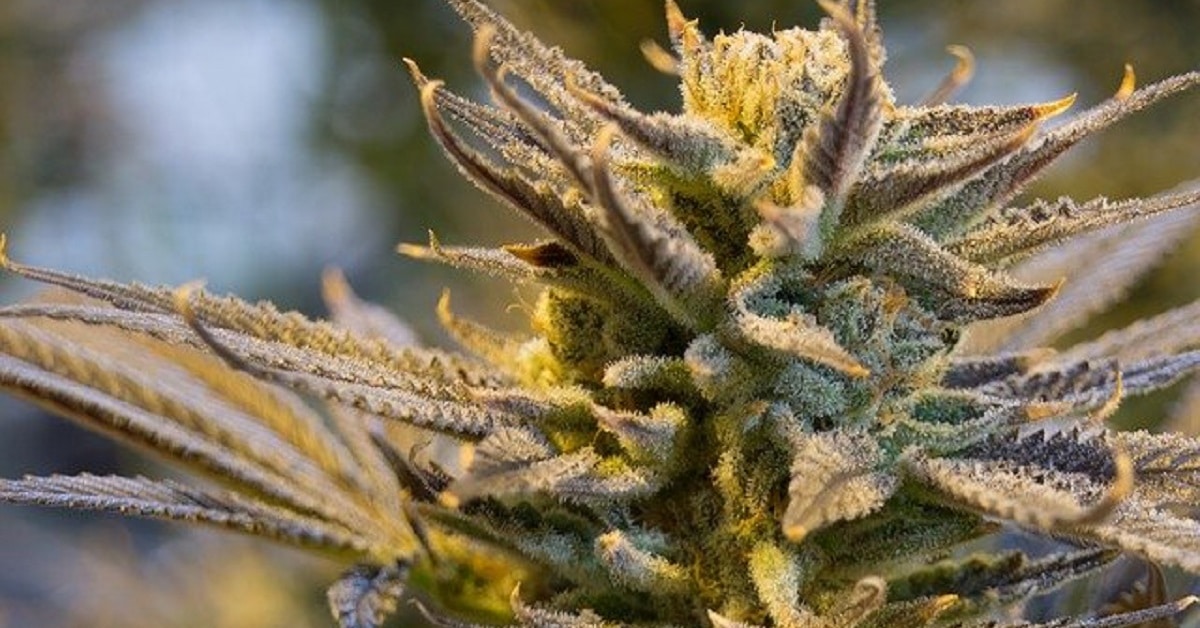
Weed is a popular slang term for the dried flowers and bracts (associated leaves) of cannabis plants prepared for smoking, vaporizing (vaping), drinking, or eating. It is also popularly known as marijuana, pot, grass, reefer, mary jane, and ganja.
Weed is a herb that contains calories. There is very little information available online about weed or marijuana nutrient data. However, based on analytical data about hemp (hemp is cannabis containing < 0.3% THC) published by Kleinhenz et al., 2020 in the journal Applied Animal Science, we estimated that weed may have about 2.037-2.225 calories per gram or 203.7-222.5 calories per 100g.
But keep in mind that we calculated this value using available nutrient data about hemp. There may be significant differences in the nutrient concentrations of different Cannabis sativa cultivars of hemp and marijuana.
The video below discusses the difference between hemp and marijuana.
You may scroll down to see how we estimated the calories (follow this link) in cannabis flower using data published by Kleinhenz et al., 2020.
Contents:
Are weed, marijuana, and hemp the same?
How many calories are in weed?
Does smoking weed have any calories?
Can eating marijuana get you high?
Does smoking weed make you lose weight?
How many calories does weed burn?
Disclaimer
This article is only for informational and educational purposes. CARE healthy living does not recommend or promote the consumption or sale of cannabis and its products for any purpose.
Studies have shown that smoking weed (and other plant products) leads to the inhalation of toxic and potentially carcinogenic products of combustion harmful to your health.
The American Lung Association has more information about the adverse effects of smoking weed, pot, or marijuana.
Although we sourced the information in this article from reputable peer-reviewed scientific publications, it is not a substitute for professional medical advice or care.
We recommend that you consult qualified health or medical professionals if you want to use cannabis products for nutritional or health purposes.
Are weed, marijuana, and hemp the same?
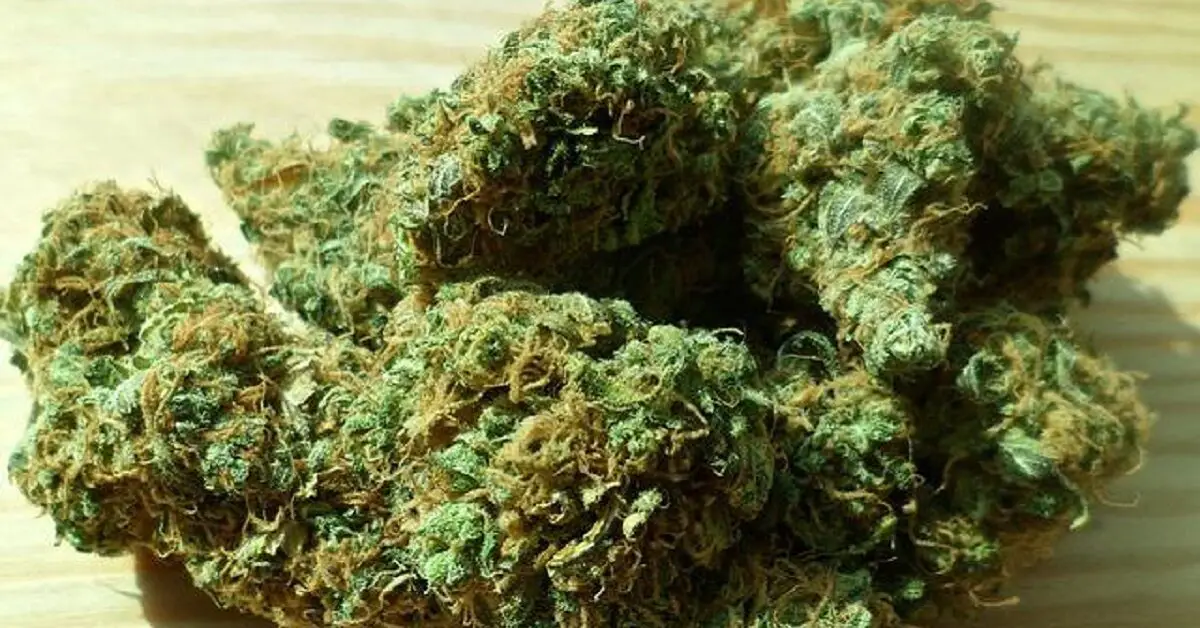
Weed is the same as marijuana. Weed (or marijuana) is usually prepared from the dried flowers and bracts of cannabis plants.
Cannabis plants belong to the family Cannabaceae. Cannabis species (or subspecies) whose parts and extracts are used for food, oil, medicine, and consumed for their psychotropic effects include Cannabis sativa, C. indica, and C. ruderalis (sometimes classed as a variety of C. Sativa).
Cannabis sativa is the most common species of the plant used for the production of weed or marijuana.
A more potent version of cannabis, C. sinsemilla (popularly known as sense), is the unfertilized or unpollinated and seedless female plant. Sinsemilla (or sensimilla) has a higher concentration of cannabinoids, including the main psychoactive substance delta-9-tetrahydrocannabinol (THC) (Delta-9-THC).
Weed is smoked in hand-rolled cigarettes (joints), blunts, pipes, bongs, or vape devices that vaporize the active ingredients for inhalation.
Hemp (or industrial hemp) are Cannabis sativa cultivars grown for industrial purposes and with THC levels no higher than 0.3% on a dry weight basis.
Industrial hemp is used for making fibers. The seeds are prepared in various ways for human and animal consumption and pressed to produce oil.
Does weed contain calories?
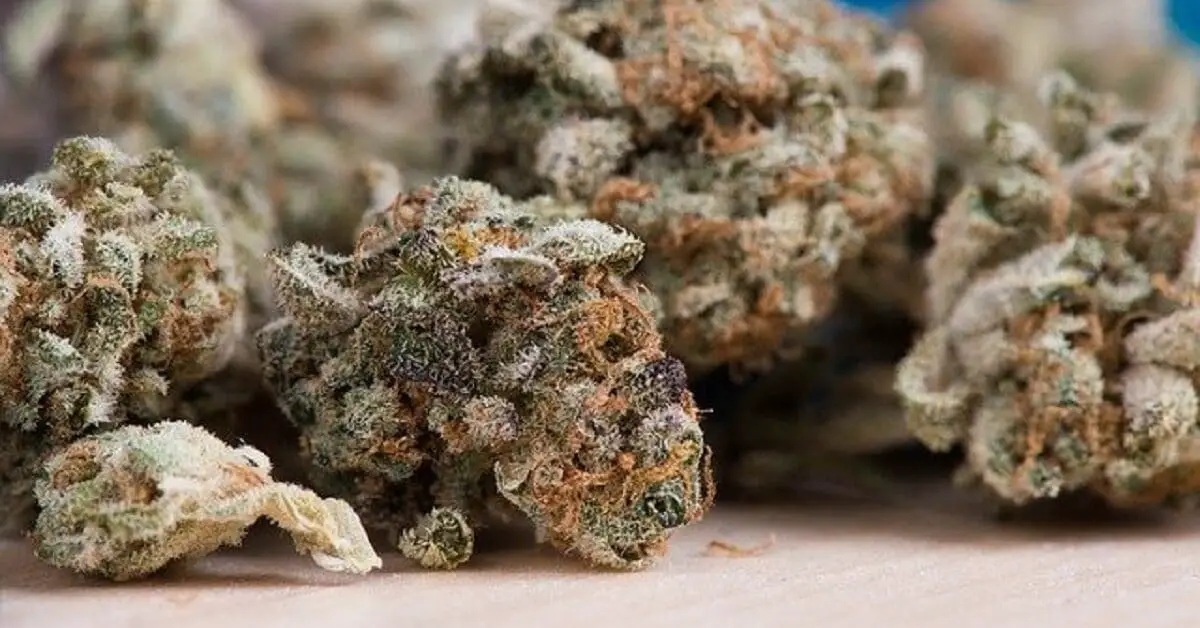
Yes, weed contains calories. It is a herb or vegetable that contains carbs, protein, and fats, the sources of calories in plant and animal food products.
Marijuana is made from dried flowers, bracts (subtending leaves), and associated stems of the female cannabis plant.
There is very little data available about the nutrient profile of weed or marijuana. However, some researchers have published data on the nutrient concentration of the hemp plant, including the whole plant, leaves, flowers, and seeds.
Hemp is the collective term for Cannabis sativa cultivars grown for industrial purposes, such as fiber production. Both hemp and marijuana plants belong to the same species, Cannabis sativa.
[Note: Sawler and colleagues (2015) reported that hemp appeared to be more genetically similar to C. Indica-type marijuana than C. sativa.]
The difference between cultivars classed as hemp and marijuana is that hemp has a lower concentration of the psychoactive substance delta-9-tetrahydrocannabinol (Delta-9-THC).
Thus, due to the unavailability of nutrient data about the marijuana plant, we shall have to use data published on hemp to estimate the calorie content of weed. But, once again, keep in mind that there may be significant differences between the nutrient concentrations of hemp and marijuana cultivars.
Kleinhenz and associates (2020) published the analytical data shown below. Table 1 shows the nutrient concentrations and digestibility of different parts of hemp (C. sativa) on dry matter (DM) basis.
| Whole plant | Leaves | Stalk | Flower | Seed heads | Chaff | Extracted flower | |
| DM% | 70.3 | 88.9 | 64.8 | 90.9 | 89.8 | 92.9 | 96.6 |
| CP,% of DM | 6.9 | 13.0 | 5.3 | 21.2 | 23.0 | 20.0 | 24.5 |
| Available CP,% of DM | 5.4 | 10.5 | 3.5 | 17.1 | 20.3 | 17.6 | 21.4 |
| Fat, % of DM | 2.7 | 8.9 | 1.2 | 12.5 | 13.2 | 4.6 | 3.2 |
| Ash, % of DM | 8.8 | 21.2 | 6.3 | 14.1 | 16.6 | 24.9 | 25.7 |
| Sugar, % of DM | 2.7 | 5.9 | 2.0 | 5.0 | 2.8 | 6.3 | 4.7 |
| Starch, % of DM | 0.2 | 0.9 | 0.1 | 0.7 | 0.7 | 1.2 | 0.6 |
| Nonfiber Carbohydrate, % | 2.5 | 15.3 | 5.3 | 6.3 | – | 26.3 | 20.2 |
| TDN, % | 24.0 | 41.0 | 19.8 | 53.6 | 61.5 | 54.3 | 46.0 |
How many calories are in weed?
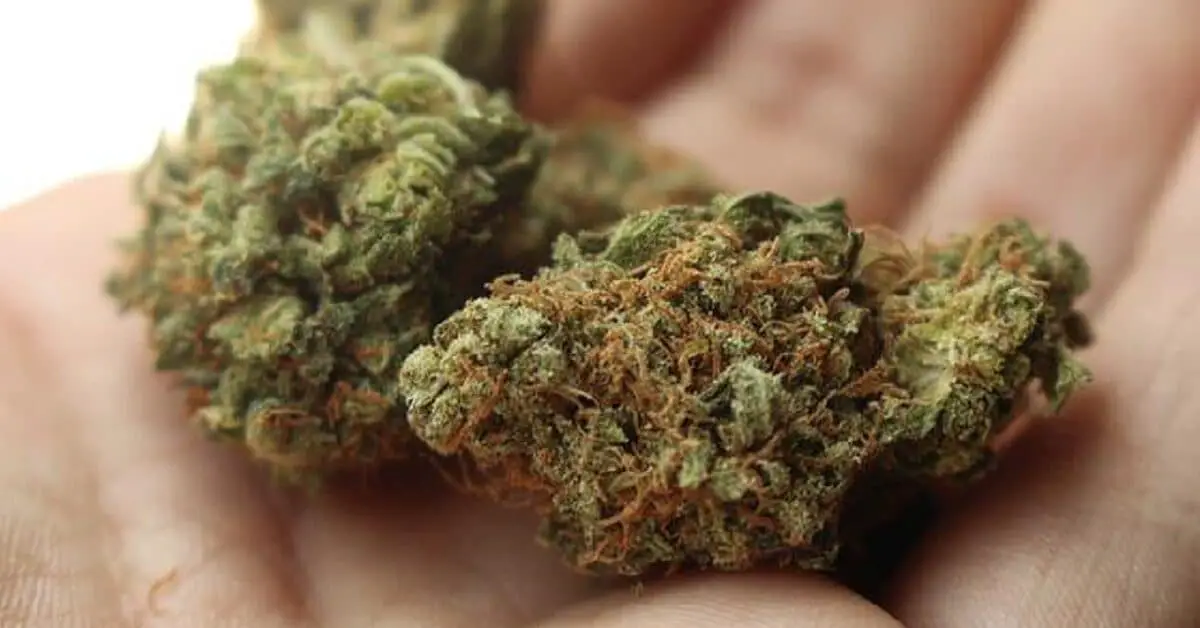
The three sources of calories in plant and animal foods are carbs, protein, and fats.
Plant carbohydrates consist of the cell wall fraction and non-cell wall fraction.
The cell-wall fraction consists mainly of non-digestible fiber (referred to as neutral detergent fiber in analytical data) such as cellulose, hemicellulose, and lignin.
The non-cell wall fraction, also known as non-fiber carbohydrates, is the digestible part that consists of starch, sugars, and pectin.
Pectin is a soluble fiber found in plant foods, including barley, oats, beans, and fruits. In humans, colonic bacteria ferment pectin to generate gut health-promoting short-chain fatty acids (SCFA), but it isn’t broken down to glucose to release energy.
Humans can not digest and utilize pectin to obtain energy because we lack the enzymes necessary to break it down.
Thus, sugars and starch are the carbohydrates that supply dietary calories for humans.
Based on the data by Kleinhenz and associates, the digestible or available carbohydrate content of dried cannabis flowers consists of sugars and starch.
The number of grams of digestible carbs, available crude protein, and fat per 100g of dried cannabis flower, as per Kleinhenz and colleagues, is tabulated below:
| Nutrient | Concentration per 100g |
| Sugars | 5.0g |
| Starch | 0.7g |
| Total digestible carbs (sugars + starch) | (5.7g) |
| Available crude protein | 17.1g |
| Fat | 12.5g |
We can use this data to estimate the calorie content of cannabis flowers as follows:
- Carbs and proteins contain 4 calories per gram
- Fat contains 9 calories per gram
- Thus, 100g of dried cannabis flower contains:
- Available carbs = 5.7g x 4 = 22.8 calories
- Available crude protein = 17.1g x 4 = 68.4 calories
- Fat = 12.5g x 9 = 112.5 calories
- Total calories = 22.8 + 68.4 + 112.5 = 203.7 calories
- That is, 100g of cannabis flower contains 203.7 calories
- or 1g of cannabis flower contains 2.037 calories.
Based on the calculations shown above, we estimate that 100g of weed may contain about 203.7 calories, equivalent to 2.037 calories/gram.
Note that we calculated the calorie content of cannabis flowers based on available crude protein and available carbohydrates. We’d obtain a higher calorie content if we calculated based on total crude protein (%DM) and non-fiber carbohydrate content.
- Nonfiber carbs = 6.3 x 4 = 25.2 calories
- Crude protein = 21.2x 4 = 84.8 calories
- Fat = 12.5 x 9 = 112.5 caloreis
- Total = 222.5 calories
- Thus, 100g of cannabis flower contains 222. 5 calories
- 1g of hemp flower contains 2.225 calories
We may compare the calories in dried cannabis flowers with other dried edible flowers, such as hibiscus, cloves, and saffron.
For comparison, we also list the calories in dried samples of plant leaves, including basil, bay leaf, and coriander leaves.
| Flowers | Leaves | Calories (per 100g) |
| Dried cannabis flower | 203.7-222.5 cal | |
| Dried hibiscus flower | 357.0 cal | |
| Dried cloves flower | 274.0 cal | |
| Dried saffron flower | 310.0 cal | |
| Dried basil | 233.0 cal | |
| Dried bay leaf | 313.0 cal | |
| Dried coriander leaves | 279.0 cal |
We previously reported that a small ripe banana weighing approximately 100g contains 88 calories.
An extra small apple weighing approximately 101g contains 52.5 calories, while 100g of hardboiled eggs contains 155 calories.
Cannabis contains minerals
Table 4 (see below) shows that cannabis flowers also contain minerals, such as calcium, phosphorus, potassium, and magnesium:
| Whole plant | Leaves | Stalk | Flower | Seed heads | Chaff | Extracted flower | |
| Calcium, % of DM | 1.4 | 4.3 | 1.0 | 2.3 | 2.6 | 5.7 | 3.6 |
| Phosphorus, % of DM | 0.3 | 0.4 | 0.3 | 1.1 | 0.7 | 0.4 | 0.4 |
| Magnesium, % of DM | 0.2 | 0.5 | 0.2 | 0.4 | 0.5 | 0.5 | 0.5 |
| Potassium, % of DM | 1.1 | 3.3 | 0.9 | 2.4 | 1.3 | 1.9 | 2.4 |
Audu, Ofojekwu, and associates (2014) reported that the leaves, stems, and seeds of Cannabis sativa obtained from Jos, Nigeria had the following proximate composition (see Table 5). The researchers did not include the flowers in their analytical data.
| Leaf | Stem | Seeds | |
| Crude Protein | 23.78% | 17.20% | 20.19% |
| Crude Fiber | 18.95% | 23.13% | 25.36% |
| Lipids (EE) | 19.97% | 8.02% | 9.31% |
| Ash | 11.18% | 6.78% | 7.20% |
| Moisture | 6.87% | 5.16% | 5.91% |
| NFE (sugars, starches) | 19.25% | 39.70% | 32.03% |
The leaves of the specimens analyzed by Audu and associates had signficantly higher nutrient density than those analyzed by Kleinhenz and colleagues. It appears to confirm our earlier comment that different cultivars of C. sativa (hemp and marijuana) may have significantly different calorie contents.
Industrial hemp cultivars used for fiber production may have significantly higher leaf and stem fiber contents and thus lower nutrient densities. However, it is not clear how this factor affects the flowers.
Audu and colleagues reported that the leaves, stems, and seeds of cannabis also contained alkaloids, flavonoids, cardiac glycosides, resins, terpins, and steroids. They contained all nine essential amino acids and a “good concentration” of methionine and lysine.
The researchers concluded that the leaves may play a role in making animal feeds.
Does smoking weed have any calories?
You don’t get any calories from smoking weed. You only inhale smoke containing a mixture of chemical compounds, mainly cannabinoids, including the psychoactive compound Δ9-THC.
Smoking any herb, including weed, also involves inhaling a mixture of toxic products of combustion that may harm the tissues of your mouth, throat, and lungs. These include tar, carbon monoxide, and other potentially carcinogenic phytochemical substances.
Due to the lack of filters used in commercial cigarette brands, hand-rolled marijuana joints deliver more tar to the lungs. Studies also suggest that weed smoke contains potent carcinogens.
Mainstream marijuana smoke contains harmful chemicals, such as carbon monoxide, hydrogen cyanide, ammonia, and nitrogen oxides. Mainstream weed smoke also contains polycyclic aromatic hydrocarbons (PAHs).
PAHs are pro-carcinogens, mutagens, and genotoxic substances.
Moir and associates (2007) reported that nitrogen oxides, hydrogen cyanide, and aromatic amines occurred in marijuana smoke at concentrations three to five times higher than tobacco smoke.
Toxic chemicals in cannabis smoke may cause respiratory dysfunction. Studies suggested that people who smoked weed were more likely than non-smokers to develop respiratory illnesses.
Weed has also been associated with changes in lung function, such as airflow obstruction, diffusion impairment, acute and chronic bronchitis, various injuries to the airway, and possible pre-cancerous or premalignant changes in the cells of the respiratory system.
Chronic marijuana smoking has also been linked with suppression of T cell function and cell-mediated immunity.
However, multiple studies suggest that cannabinoids may kill certain types of cancer cells (Munson et al., 1975; Sanchez et al., 1998; Sanchez et al., 2001; McKallip et al., 2002; Casanova et al., 2003).
Studies have also shown that using tobacco products containing nicotine and vaping products containing synthetic nicotine may be harmful to health.
Can you eat marijuana?
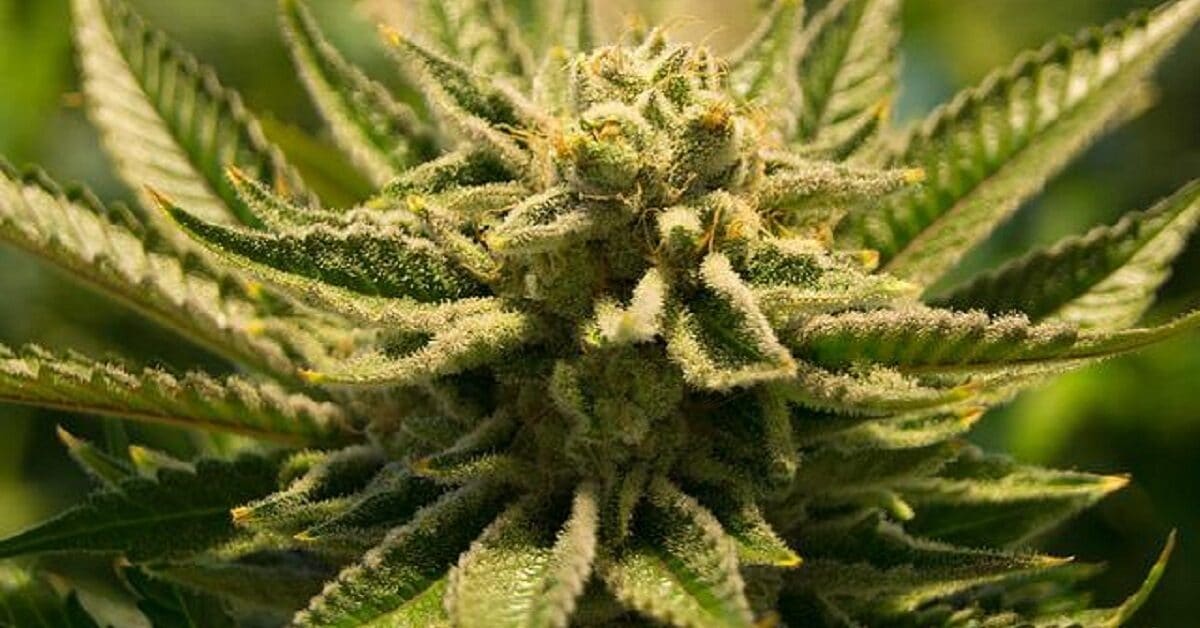
Besides smoking or vaping, people eat fresh and dried parts of the marijuana plant as herbs or vegetables for nutritional and medicinal purposes.
The plant parts are eaten raw, cooked, powdered, or made into a drink. Cannabis products are also prepared as “marijuana edibles,” including gummies, candies, brownies, cookies, chocolates, teas, oils, lozenges, tinctures, capsules (oil capsules), extracts, resins (with high THC concentration) for nutritional, recreational, and medicinal purposes.
In the previous section, we calculated that cannabis flower may contain about 2.037 calories per gram and that it is also a source of minerals, proteins, fats, and other nutrients.
Some studies suggest that the cannabidiol (CBD) content of cannabis may help in the management of various health conditions, including anxiety, chronic pain, digestive disturbances, muscle spasms, and insomnia.
CBD may also help manage epilepsy syndromes, such as Dravet syndrome and Lennox-Gastaut syndrome (LGS).
Studies suggest that cannabis boosts appetite, alleviates nausea, and prevents vomiting due to chemotherapy and other treatments.
Cannabis products are also popularly consumed recreationally for their psychotropic (altered states of consciousness) effects, including euphoria. Some cultures use weed as an entheogen for spiritual or religious purposes.
For instance, in India, cannabis leaves have been used for centuries to prepare bhang, consumed with food, or as a beverage during religious ceremonies and festivals.
Can eating weed get you high?
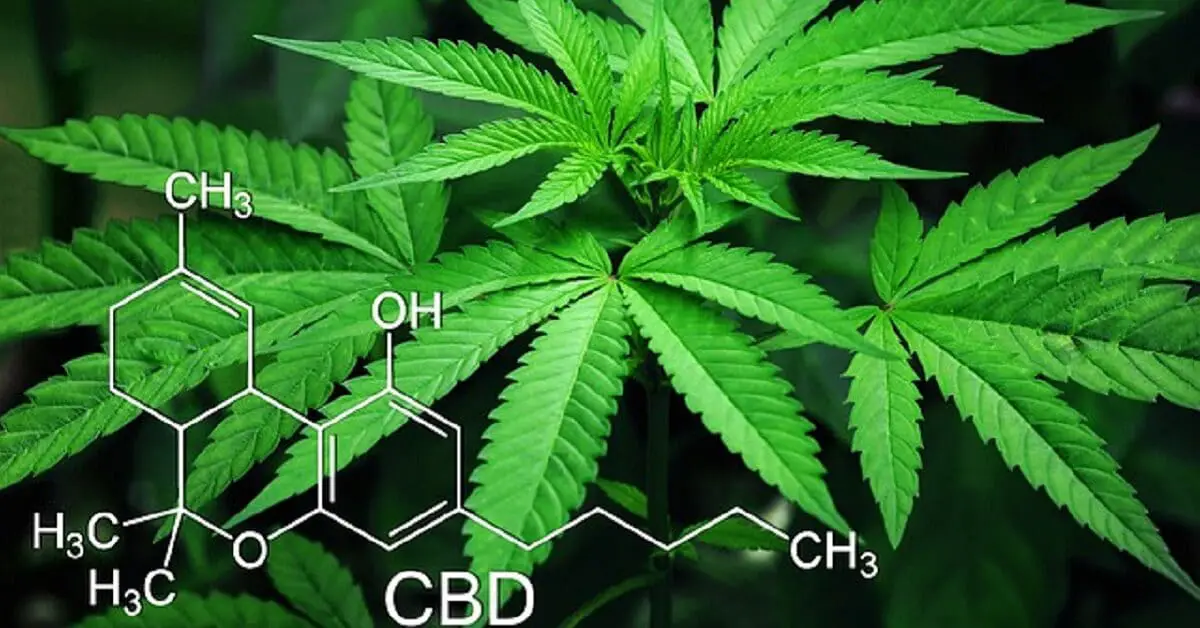
The acidic cannabinoids Δ9-tetrahydrocannabinolic acid A (THCA-A), cannabidiolic acid (CBDA), and cannabigerolic acid (CBGA) are the carboxylated forms of THC, CBD, and CBG.
They are the are the naturally occurring non-psychoactive substances found in raw cannabis. Thus, you are unlikely to get high eating raw cannabis.
However, THCA-A, CBDA, and CBGA are thermally unstable (breakdown when heat is applied). They undergo decarboxylation when exposed to light or heat during smoking, baking, or refluxing to form delta-9-tetrahydrocannabinol (Δ9-THC), cannabidiol (CBD), and cannabigerol (CBG).
Delta-9-tetrahydrocannabinol (Δ9-tetrahydrocannabinol or Δ9-THC) is the main psychoactive compound in cannabis. Thus, you are more likely to get high by smoking or consuming marijuana edibles that have undergone heating through cooking or baking.
Cannabidiol (CBD) and cannabigerol (CBG) are non-psychoactive substances.
CBD is used for medicinal purposes. Studies suggest that it has anxiolytic and anti-inflammatory effects.
Does smoking weed make you lose weight?
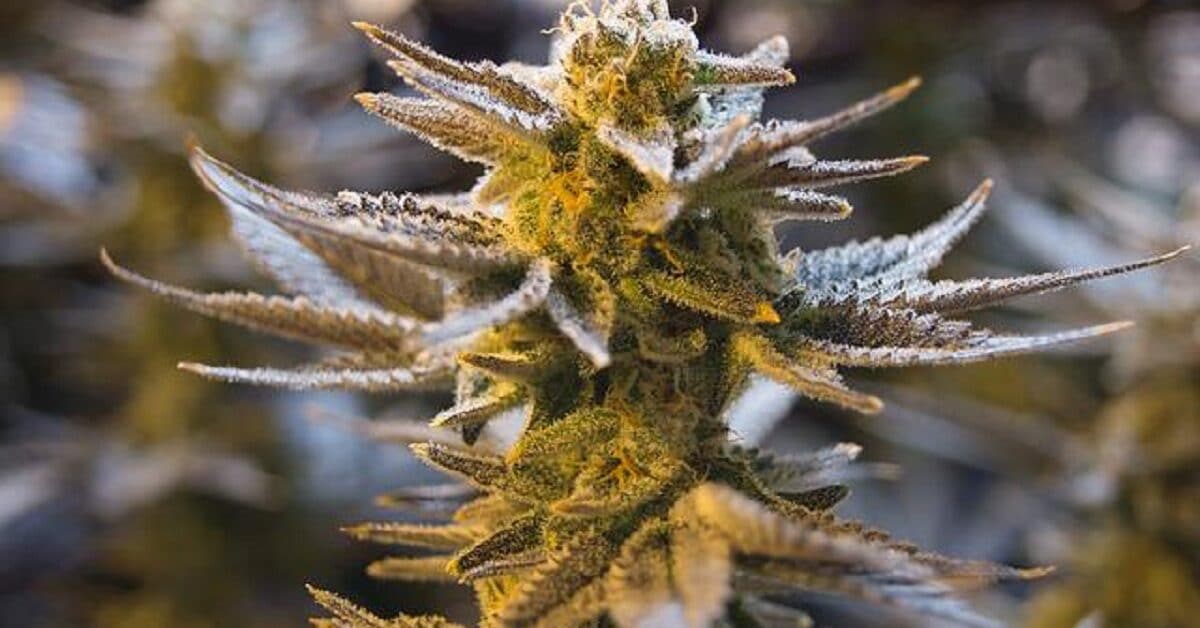
Studies suggest that people who smoke weed regularly have lower body weights than people who don’t.
Research studies that found that weed smokers were skinnier and had lower waist sizes than non-smokers led to the belief that weed may play a role in weight loss intervention programs.
However, studies have not yielded any conclusive evidence that weed may play a beneficial role in weight loss. Thus, health experts and authorities do not recommend weed for weight loss.
The idea that regular weed smokers had lower average weight than non-smokers appeared to contradict claims that weed stimulates the appetite and makes you want to snack more (the so-called “munchies.”).
Hayatbakhsh and associates (2010) conducted a study to investigate the relationship between the use of cannabis and obesity. The study, based on the cannabis use data of 2566 young adults (1264 males and 1302 females), found that participants who used cannabis were less likely to have BMIs in the overweight range (≥ 25).
Participants who used cannabis daily had a significantly lower prevalence of overweight and obesity than those who did not.
The authors concluded that data suggested a lower prevalence of overweight and obesity among adults who used cannabis, but they recommended more studies to explain the observation.
Yann Le Strat and associates (2011) reviewed data from two epidemiologic studies of American adults to determine the association between cannabis use and body weight.
They found that participants who reported they did not use cannabis in the previous 12 months had obesity prevalence rates of 22.0% and 25.3%. Those who used cannabis at least 3 days a week had obesity prevalence rates of 14.3% and 17.2%.
Even after adjusting for tobacco use, sex, and age, the researchers found there were significant body mass index (BMI) differences between cannabis users and non-users.
The authors concluded that available data indicated that cannabis users had a lower prevalence of obesity than non-users.
Clark and colleagues (2018) also conducted a meta-analysis to investigate the association between cannabis use and body mass index.
They reported that individuals who used cannabis had significantly lower body mass index and lower rates of obesity than non-users, despite having higher caloric intake.
Rodondi and associates (2006) also reported that weed use was associated with increased appetite, a high caloric diet, an increase in blood pressure, and decreases in high-density lipoprotein cholesterol and triglycerides.
In a study of 3,617 participants, Rodondi and colleagues found that regular weed users reported higher caloric intake: 3,365 kcal/day among marijuana users compared with 2,746 kcal/day among never users (see also Smit and Crespo, 2001).
Based on the results of studies that showed that weed use increased caloric intake, it seemed paradoxical that cannabis users had average BMIs lower than individuals who did not.
Clark and associates tried to explain the paradox by suggesting that weed intake may “downregulate” CB1R, leading to increased metabolic rates and reduced energy stores.
The increased metabolic rate counteracted the effect of increased caloric intake on BMI.
In contrast to
How many calories does weed burn?
Research studies suggesting that individuals who use cannabis regularly may have lower body weights despite increased caloric intake led some to believe that smoking weed helps weight loss by “burning calories.”
But despite the suggestion by Clark and associates (2018) that weed intake may increase metabolic rates by downregulating CB1R, research is still ongoing, and experts do not recommend weed as part of weight loss intervention. The best ways to lose weight include:
- Reducing your daily calorie intake (by ≤ 500 calories/day)
- Eating more healthy, nutrient-dense foods
- Cutting down on foods with empty calories
- Consuming more protein-rich foods
You may also increase your physical activity level by engaging in exercises, such as cardio training (jogging and running) and calisthenics (push-ups, squats, and sit-ups).

